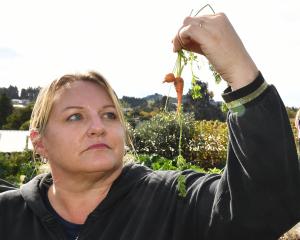Dr Stanton, a senior research fellow, began her involvement with the project in 2007 when she was co-ordinating a high-throughput DNA sequencing unit at the department.
A state-of-the-art sequencing machine at the unit was used to undertake some of the initial work for the overall project, at ''an incredibly exciting time'' for the Otago researchers, she said.
By comparing its genetic underpinnings to those of other mammals, the international researchers have identified genes that may explain the sheep's specialised digestive system and the sheep's unique fat metabolism process, which helps maintain its thick, woolly coat.
Dr Stanton is a co-author of a paper detailing the sheep genome, which has just been published in the leading international journal Science. The work was undertaken by the International Sheep Genome Consortium, and Dr Stanton and her team worked closely with John McEwan and other colleagues from AgResearch on the project.
''I'm very happy with where it got to,'' she said.
The overall project had been a ''massive challenge'', and Dr Stanton was pleased to have played a small part in the wider effort.
Because sheep were an important agricultural species, the results of this effort would provide crucial resources for future research on the animal.
Knowledge gleaned from the international effort was also likely to benefit New Zealand agriculture significantly in the future, she said. Sheep are some of the first livestock domesticated by man, cultivated for their meat, milk and wool.
To explore the genetic foundations of the sheep's unusual evolutionary traits, the researchers assembled the reference genome sequences of Texel sheep, a breed originally from the Netherlands.
To clarify the evolutionary relationships among sheep and other mammals based on genetic differences, the researchers constructed a phylogenetic tree that compared standard representative genomes among ruminants and other related species.
The lineage leading to modern-day sheep separated from goats and other ruminants, they say, in the late Neogene period, which ended about 2.6 million years ago.












